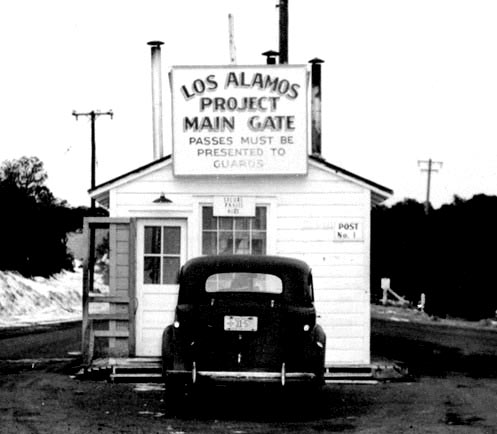A new oral history on the “Voices of the Manhattan Project” website presents a distinct perspective on life in the middle of the race to build the atomic bomb: that of a child growing up in Los Alamos. Dimas Chavez, whose father constructed laboratory and civilian facilities under the Zia Company, recalls various triumphs and travails that resulted from his time in the Los Alamos community. His memories demonstrate the unique experiences shared by children of the Manhattan Project, most of whom grew up in gated communities, unknowingly linked to the most secret program in the nation.
Because the main sites of the Manhattan Project stood isolated from the rest of the country, children of scientists and workers experienced a strange dichotomy between open, rural landscapes and high-security borders. The secretive nature of the project often led to confusion about where the boundaries truly lay. When a lost plane circled Los Alamos in search of the proper route to Santa Fe, Dana Mitchell, the son of scientist Dana P. Mitchell, recalls that he and a group of adolescent boys – all the children of physicists, chemists, and engineers – used a discarded searchlight to signal in Morse code to the plane: “Not Santa Fe, not Santa Fe! Go southeast! Go southeast!” Although the children’s innovative solution saved the lives of the pilot and his passengers, the signaling had also provided evidence of the secret community hidden in rural New Mexico. Los Alamos security, upon learning of the event, promptly confiscated the searchlight.
Yet the stringent security measures did not prevent children from taking advantage of all the wilderness had to offer. Weekend hikes were common in Los Alamos, the children playing amongst the craggy rocks as their scientist fathers up ahead quietly discussed their research. Chavez remembers tubing down the Rio Grande to meet his peers at the bottom of the Otowi Bridge for a campfire, hot dogs, and cool drinks. When he and his friends grew old enough to drive, they took advantage of the untamed Los Alamos landscape to maneuver their cars down the rugged terrain, decelerating on the upward swing to fly through the air for a split second before returning to the ground.
Children of the Manhattan Project workers experienced not only rural freedom but completely gated communities, where they felt protected at all times. Only members of the project could live in these designated sites, where the government painstakingly vetted each resident before permitting access to the area. Crime was thus virtually nonexistent, safety taken for granted. At five years old in Richland, Washington (the residential area for families with members working at the Hanford site), Burt Pierard recalls walking alone across town to see twelve-cent movies, a deal that included two cartoons, two main features, a newsreel and a serial story.
Despite their proximity to the project and its participants, the children rarely witnessed any revealing clues that shed light on the historical events unfolding in their hometowns. When Jack Aeby, a Boy Scout leader for Los Alamos children, led a group of boys on a four-day camping trip, he and his students suddenly heard among the trees the distinct sound of explosions, a sudden intrusion on the calm forest atmosphere. It was V-J Day, and scientist George Kistiakowsky was setting off scrap TNT at the S-Site to celebrate the Allied victory – a victory that appeared very distant from isolated New Mexico. In a sense, Aeby and his Boy Scouts in this moment witnessed the end of the war in the same way the Manhattan Project appeared to the children whose families worked on it: close enough to sense in the distance, but never truly visible.





